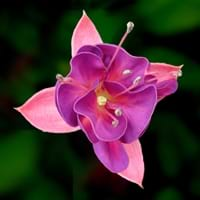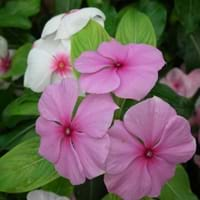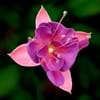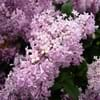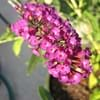Life Span
Perennial
Perennial
Type
Tender Perennial
Flowering Plants, Shrubs
Origin
Caribbean
Madagascar
Types
Fuchsia Decidua, Fuchsia Fulgens, Fuchsia Splendens, Fuchsia Microphylla
Purple vinca, Vinca, cherry red, strawberry color
Habitat
Forest edges, Woods
Subtropical climates, Tropical regions
USDA Hardiness Zone
9-10
4-9
Sunset Zone
16, 17, 23, 24
A1, A2, A3, H1, H2, 1a, 1b, 2a, 2b, 3a, 3b, 4, 5, 6, 7, 8, 9, 10, 11, 12, 13, 14, 15, 16, 17, 18, 19, 20, 21, 22, 23, 24
Habit
Arching/Fountain-shaped
Clump-Forming
Flower Color
Orange Red
Magenta, Pink, Rose
Flower Color Modifier
Not Available
Not Available
Fruit Color
Not Available
Not Available
Leaf Color in Spring
Purple, Dark Green
Dark Green
Leaf Color in Summer
Purple, Dark Green
Dark Green
Leaf Color in Fall
Purple, Dark Green
Dark Green
Leaf Color in Winter
Unknown
Dark Green
Leaf Shape
Long Linear
Oval
Plant Season
Spring, Summer, Fall, Winter
Fall, Spring, Summer, Winter
Sunlight
Full Sun, Partial Sun, Partial shade
Partial shade
Type of Soil
Clay, Loam, Sand
Loamy, Sandy, Well drained
The pH of Soil
Acidic, Neutral
Neutral, Slightly Alkaline
Soil Drainage
Average
Well drained
Bloom Time
Indeterminate
Fall, Spring, Summer
Tolerances
Drought
Drought, Pollution, Salt
Where to Plant?
Container, Ground, Pot
Container, Ground, Pot
How to Plant?
Seedlings, Stem Planting, Transplanting
Seedlings, Stem Planting, Transplanting
Plant Maintenance
Medium
Medium
Watering Requirements
Requires regular watering
Does not require lot of watering, Medium
In Summer
Lots of watering
Lots of watering
In Spring
Moderate
Moderate
In Winter
Average Water
Average Water
Soil pH
Acidic, Neutral
Neutral, Slightly Alkaline
Soil Type
Clay, Loam, Sand
Loamy, Sandy, Well drained
Soil Drainage Capacity
Average
Well drained
Sun Exposure
Full Sun, Partial Sun, Partial shade
Partial shade
Pruning
Prune in spring, Prune lower leaves, Remove dead or diseased plant parts, Remove deadheads, Remove shoots
Prune ocassionally
Fertilizers
All-Purpose Liquid Fertilizer
All-Purpose Liquid Fertilizer
Pests and Diseases
Rhizoctonia Root Rot, Rust
Botrytis Blight, Canker, Crown rot, Pythium rot, Root rot
Plant Tolerance
Drought
Drought
Flower Petal Number
Single
Single
Foliage Texture
Medium
Medium
Foliage Sheen
Matte
Glossy
Attracts
Hummingbirds
Butterflies
Allergy
Asthma, Hay fever
Intestinal gas, Nausea, Vomiting
Aesthetic Uses
Showy Purposes
Beautification, Showy Purposes
Beauty Benefits
Not Available
Not Available
Environmental Uses
Air purification
Air purification
Medicinal Uses
Not Available
Chest pain, High blood pressure, Inflammation, Sore throat, Tooth ache, Wounds
Part of Plant Used
Flowers, Fruits
Whole plant
Other Uses
Not Available
Decoration Purposes, Showy Purposes, Used as Ornamental plant
Used As Indoor Plant
Yes
Yes
Used As Outdoor Plant
Yes
Yes
Garden Design
Bedding Plant, Container, Feature Plant, Foundation, Hedges, Tropical
Bedding Plant, Container, Edging
Botanical Name
FUCHSIA triphylla
Catharanthus roseus
Common Name
Fuchsia
Madagascar periwinkle or rosy periwinkle
In Hindi
फ्यूशिया
Periwinkle
In German
Fuchsie
Immergrün
In French
Fuchsia
Pervenche
In Portuguese
Fúcsia
Mirta
In Polish
Fuksja
Barwinek
In Latin
Fuchsia
Periwinkle
Phylum
Magnoliophyta
Mollusca
Class
Dicotyledonae
Gastropoda
Order
Myrtales
Geraniales
Family
Onagraceae
Apocynaceae
Genus
Fuchsia
Catharanthus
Clade
Angiosperms, Eudicots, Rosids
Not Available
Tribe
Not Available
Not Available
Subfamily
Not Available
Not Available
Season and Care of Fuchsia and Periwinkle
Season and care of Fuchsia and Periwinkle is important to know. While considering everything about Fuchsia and Periwinkle Care, growing season is an essential factor. Fuchsia season is Spring, Summer, Fall and Winter and Periwinkle season is Spring, Summer, Fall and Winter. The type of soil for Fuchsia is Clay, Loam, Sand and for Periwinkle is Loamy, Sandy, Well drained while the PH of soil for Fuchsia is Acidic, Neutral and for Periwinkle is Neutral, Slightly Alkaline.
Fuchsia and Periwinkle Physical Information
Fuchsia and Periwinkle physical information is very important for comparison. Fuchsia height is 45.70 cm and width 45.70 cm whereas Periwinkle height is 1.97 cm and width 2.96 cm. The color specification of Fuchsia and Periwinkle are as follows:
Fuchsia flower color: Orange Red
Fuchsia leaf color: Purple and Dark Green
Periwinkle flower color: Magenta, Pink and Rose
- Periwinkle leaf color: Dark Green
Care of Fuchsia and Periwinkle
Care of Fuchsia and Periwinkle include pruning, fertilizers, watering etc. Fuchsia pruning is done Prune in spring, Prune lower leaves, Remove dead or diseased plant parts, Remove deadheads and Remove shoots and Periwinkle pruning is done Prune ocassionally. In summer Fuchsia needs Lots of watering and in winter, it needs Average Water. Whereas, in summer Periwinkle needs Lots of watering and in winter, it needs Average Water.
